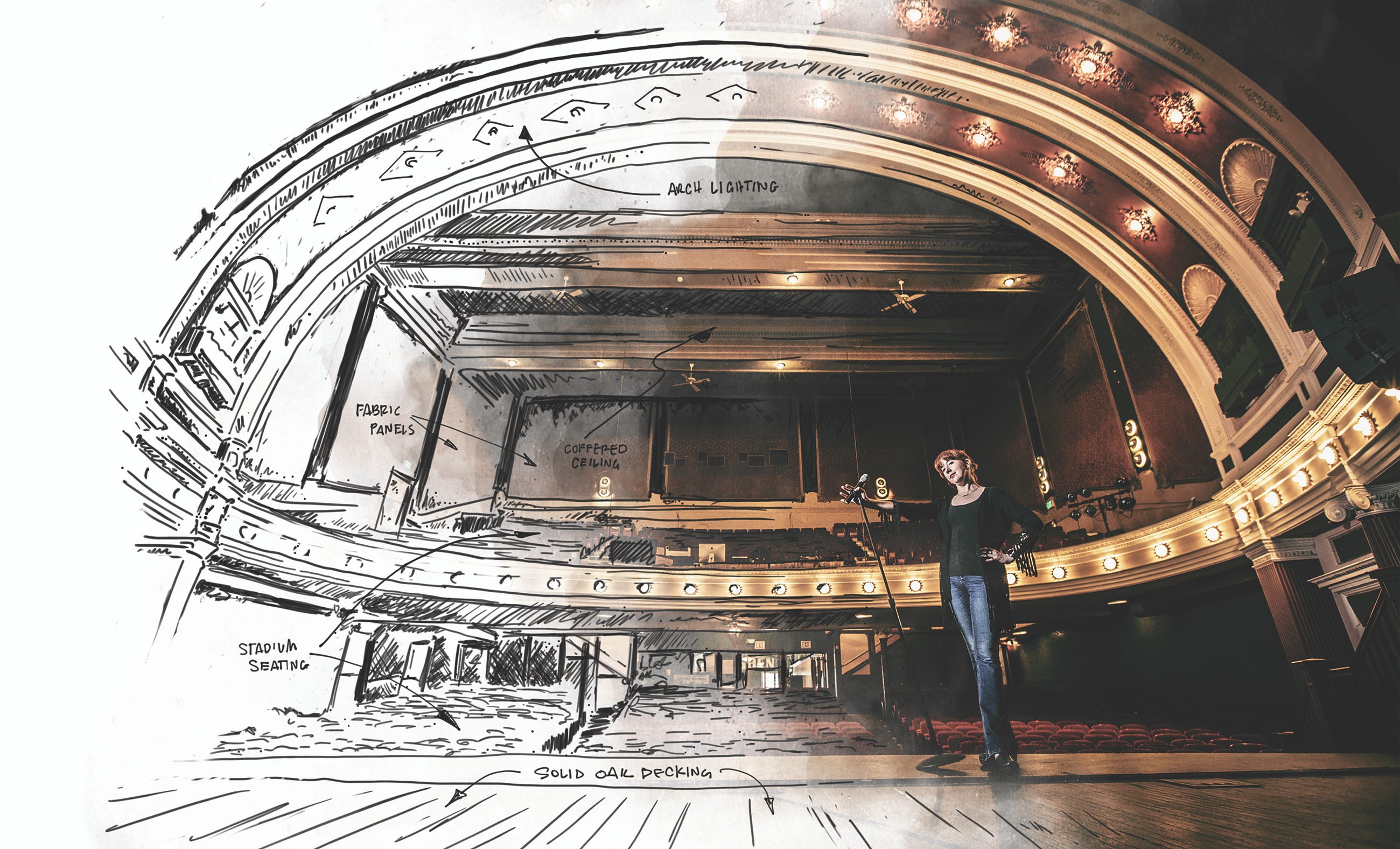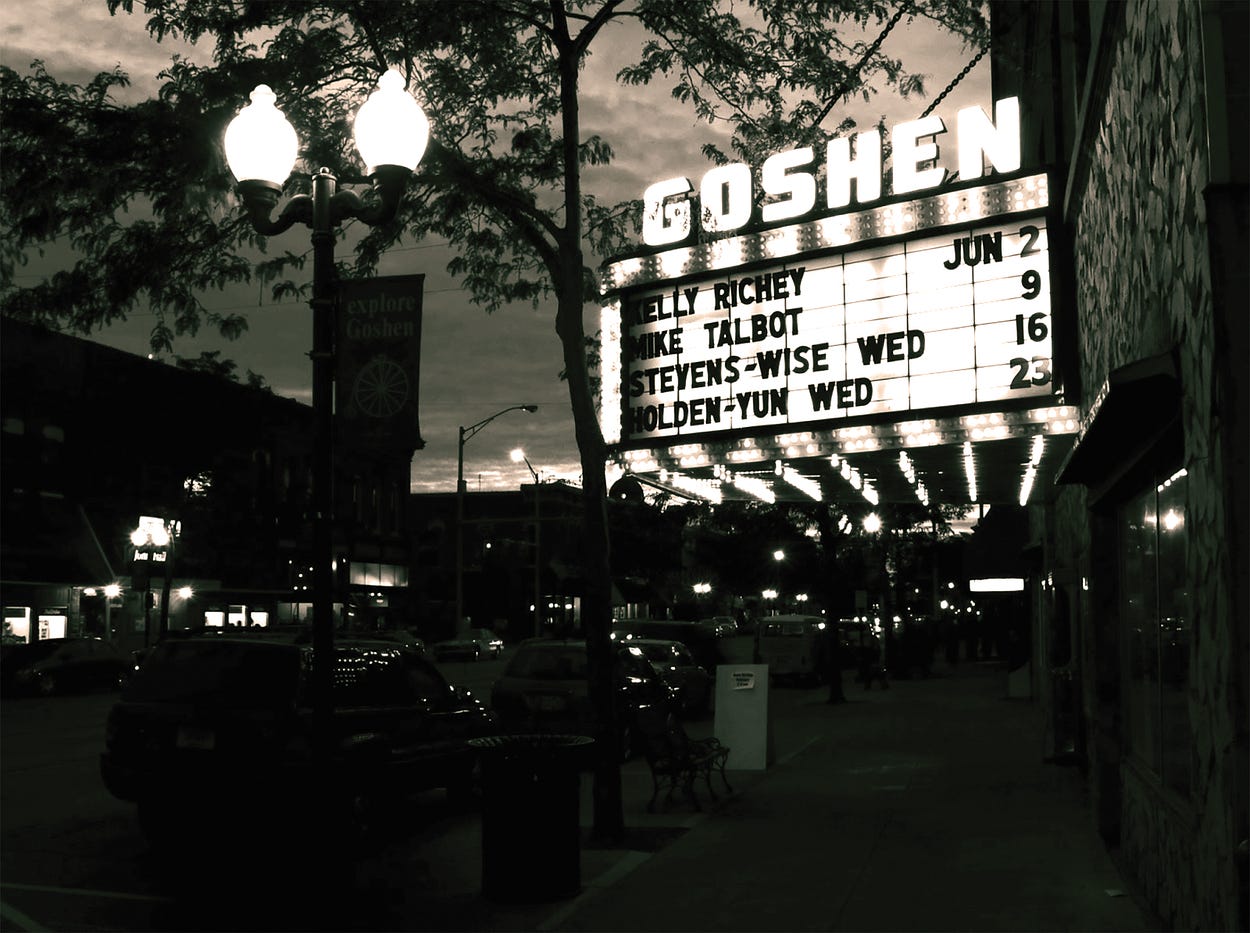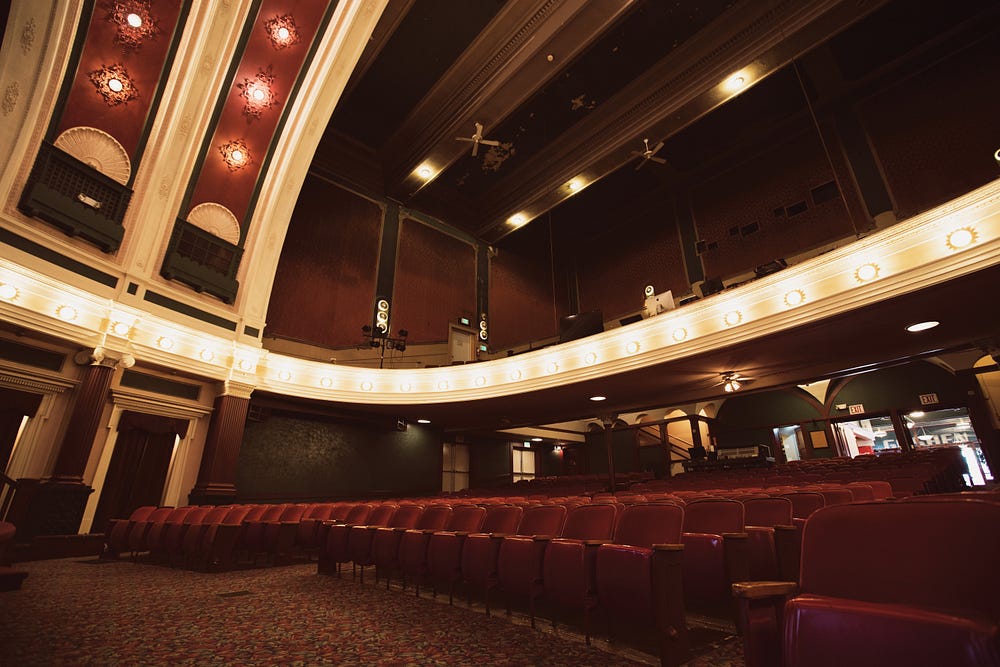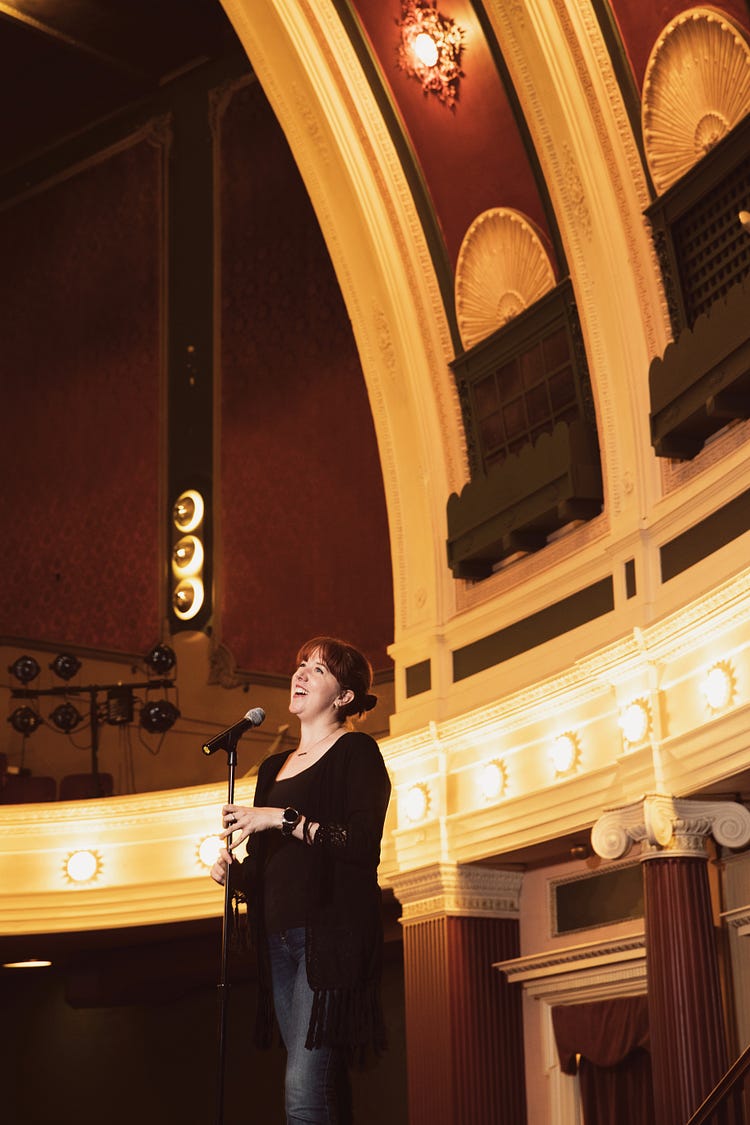The story of Goshen Theater, reborn.
Click. Click. Click.
Her vintage Ferragamo’s, studded and black, clack across the empty stage. Maple boards creak intermittently, each filled with memories of the thousands of footsteps that have come before.

As she slowly edges across the floor, she’s careful to feel each board, she’s careful to feel each imperfection, the result of generations of previous acts. The subtle bend under her foot bounces back with a pulse of history she swears she can feel.
The theater is dark. Lights off, her mind is left to fill in the details, to soften the imperfections. The glow from the emergency exit bounds through the dusty air and falls softly on her auburn hair as she begins.
Amber Burgess has done this act before. Whenever she finds a new space, she takes time, alone, to get to know it. To have a conversation with it. This conversation is a classic one.
A harsh and sweeping octave jump is unforgiving to a novice singer, but it’s second nature to Amber. “Somewhere, over the rainbow…”
Why did she choose that song? Why in this place? She couldn’t possibly have known how fitting it was; she doesn’t yet know the history. She hasn’t yet pulled back the curtain.
Her alto voice soars, cutting through the dust and darkness and reverberating through the hollows of the theater. Bouncing off a domed ceiling. Gleaning off gilded Deco fixtures befitting Jay Gatsby himself. Filling the once empty and abandoned space with new life through her gift. Restoring it’s weakened bones, just as the community has set out to bring back this nearly forgotten cultural centerpiece with their gifts.



